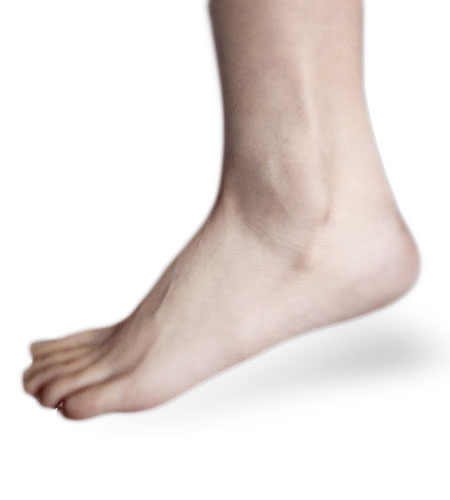Acute Effects of Increased Joint Mobilization Treatment Duration on Ankle Function and Dynamic Postural Control in Female Athletes With Chronic Ankle Instability
Holland CJ, Hughes JD, De Ste Croix MBA. Orthop J Sports Med. 2020 Jun 22;8(6):2325967120927371.
Full Text Freely Available
Take-Home Message
A female athlete with chronic ankle instability may get better acute improvements in range of motion and balance with a longer joint mobilization treatment.
Summary
Chronic ankle instability, which is a common outcome after an ankle sprain, is related to reduced dorsiflexion range of motion (ROM), decreased posterior talar glide, and increased anterior joint laxity. Interventions such as joint mobilizations, which address noncontractile tissue restriction, may be ideal for addressing some of the concerns related to chronic ankle instability. However, clinicians need to know the specific parameters that optimize patient outcomes (e.g., what grade and duration of treatment). Therefore, the authors randomly assigned 48 female athletes with unilateral chronic ankle instability into 1 of 3 treatment groups with different treatment durations of ankle mobilizations (30-seconds, 60-seconds, or 120-seconds; n=16 per group). They defined chronic ankle instability as having a history of an ankle sprain resulting in loss of function for at least 1 day and self-reporting a score of <24 on the Cumberland Ankle Instability Tool. All athletes received 3 treatments consisting of Maitland grade IV anterior-to-posterior talar joint mobilization. The authors assessed dorsiflexion ROM using the weight-bearing lunge test and extent of posterior talar guide with the posterior glide test in both injured and uninjured limbs before and after each of the treatments. They also measured dynamic postural control before and after each treatment using the star excursion balance test. Prior to the analyses, the authors calculated the percent improvement after each treatment session for each outcome measure. The authors found no differences between groups at baseline. Overall, the 120-second group experienced greater improvements after each session for dorsiflexion ROM, posterior talar glide, and anterior reach on the star excursion balance test. Furthermore, the 60-second group typically had better improvements than the 30-second group in those same outcome measures.
Viewpoints
The authors of this study demonstrated that grade IV joint mobilizations improve dorsiflexion ROM, posterior glide, and dynamic balance. On average, the participants receiving the 120-second intervention often experienced 2-3 times the improvement than the 30-second group. However, the goal of this study was to focus on the acute changes after each treatment. It would be interesting to see how the different treatment durations compare after 4 to 6 weeks of treatment. It would also be interesting to see if treatment sessions longer than 120-seconds would continue to demonstrate improvement or whether 120-seconds is the ceiling for clinical outcome gains. Furthermore, it would be beneficial to know if these changes lead to improved patient-reported outcomes. Currently, medical professionals should consider implementing grade IV joint mobilizations for those with chronic ankle instability to improve mechanical and functional limitations, with longer duration treatments being advantageous.
Questions for Discussion
Do you use joint mobilizations? What parameters do you use? What positive outcomes were you able to measure following the joint mobilization treatment?
Written by: Jane McDevitt
Reviewed by: Jeffrey Driban
Related Posts
Chronic Ankle Instability Starts Earlier Than We Thought
Hopping for Better Days with CAI
Put it All Together for Better Outcomes for Patients with Chronic Ankle Instability
Mid-Life Ankle Crisis with Chronic Ankle Instability



Chronic ankle instability will lead to injuries. Need to optimize over time as part of lower body stabilization training program.